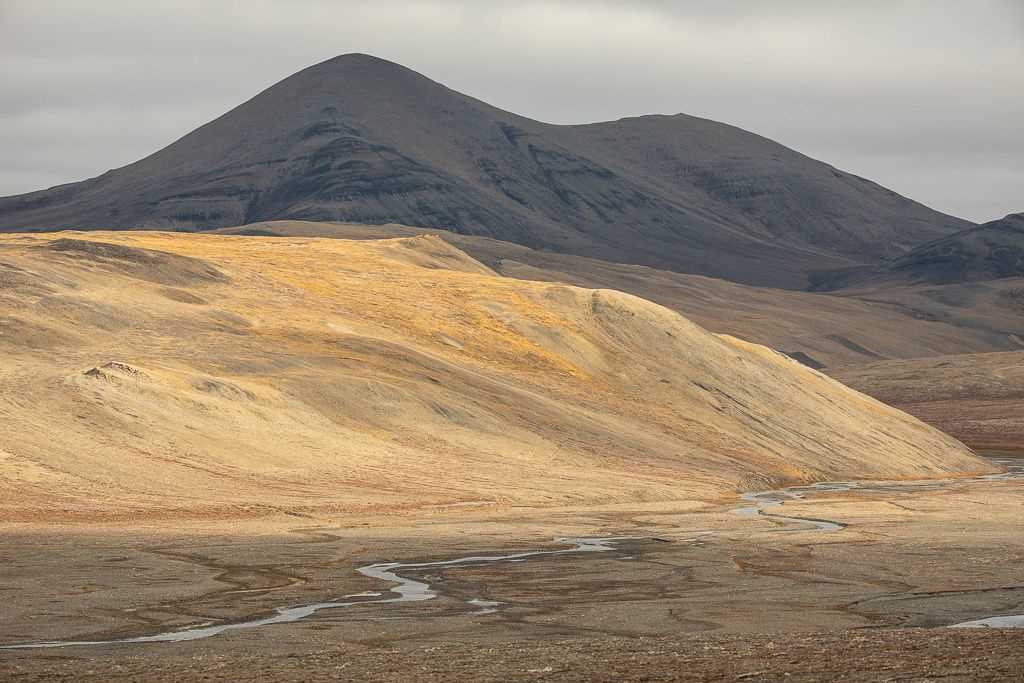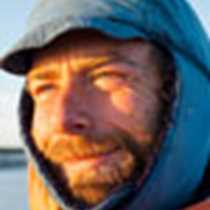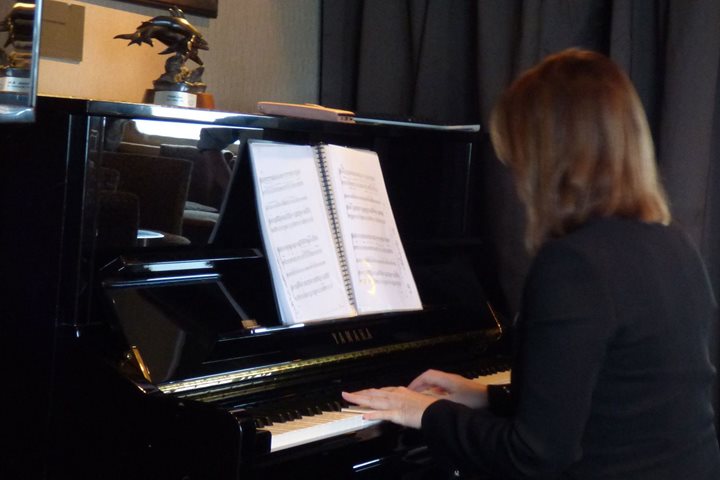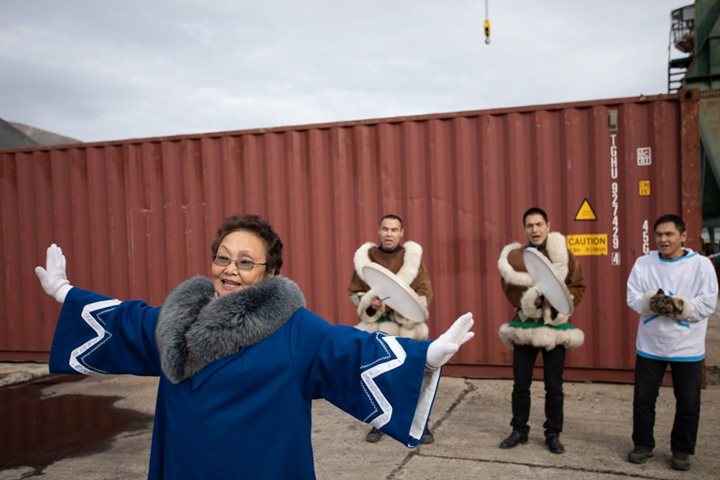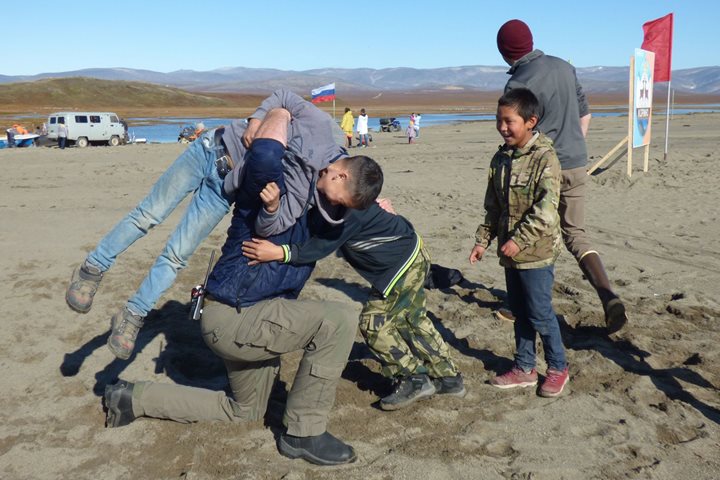At precisely 6:00 a.m., National Geographic Orion approached Cape Blossom, the extreme south eastern point on Wrangel Island. The seas were glassy calm and the skies overcast and as our eyes became accustomed and not a breath of wind, this bode well for our first day on Wrangel Island. Some buildings could be discerned close to the point of the sandy spit, these were formerly used as a weather station and then by mammal scientists, and then right on cue the first bears were sighted along the coast. By the time the ship began her slow navigation north along the west coast many were up with binoculars and cameras at the ready and a cup of strong coffee in the other hand. The air of expectancy onboard was palpable. In the blink of an eye the bear count had already exceeded ten.
Over the next two hours we made slow steady progress northwards and every step of the way more and more bears were sighted. The starboard decks of the ship were jammed pack with people, all snuggly clad in warm gear, and with the most remarkable array of cameras and smartphones pointed shoreward endeavoring to somehow capture the remarkable scene that was playing out before our eyes.
The dining room at breakfast was a cacophony of lively chatter. The expedition leader made his customary wake-up call and announced that over 35 bears had already been sighted. Of course there was other wildlife also sighted; black-legged kittiwakes, glaucous gulls, eider ducks and short-tailed shearwaters being the most abundant. The landscape of this island was also a topic worthy off sharing: the beautiful colors of the tundra below, mostly made up of ochres, rusty browns and an array of yellows giving way to pale and dark grays.
Breakfast was a hasty affair as everybody was desperate to get back out on the bridge and the decks not wanting to miss anything. What took place for the rest of the morning and afternoon was nothing short of breathtaking. It ended up being one remarkable experience followed by another, it was delicious wide-eyed breathlessness.
By the time lunch came around almost everybody had lost count of the number of bears they had seen along this remarkable portion of coastline. At times there were so many bears in one spot they were described as “clusters” or “herds.” On one occasion there were seven or eight bears in a single file heading up the slopes of the hills, others walked the beaches and others simply lied about the place, often striking the most incredibly relaxed poses with tummies in the air and limbs spread out in all directions. There were bears that looked like the usual butterballs, others were very dirty looking varying from grays to browns and others had a green tinge to them. What was beyond belief was the statistic for this most remarkable of mornings and early afternoon – around 174 bears had been sighted! Truly astounding.
Our rangers shared with us that most of the bears looked healthy even though their main food source was way out at sea. Of course they would pick up scraps, catch lemmings, hunt walrus and take advantage of any stranded whale that might wash up on the shore as well as getting some vitamins and minerals from the abundant plants here. There were other mammals spotted during this incredible morning such as walrus, bearded seals and musk ox.
During lunch the ship anchored opposite a small pebbly beach in close proximity to Bird Market Cliffs. A small cabin just back from the landing area. There were several walks on offer: long, medium, photo-focused and short. The long hikers headed for the small cabin and then cut across the tundra to then walk along the wide valley of a running stream. Along the way many plants were sighted as well as snowy owls, including one carrying an unfortunate lemming in its talons, surely to feed its owlets. This bird is high on most people’s list and elicited all manner of excited reactions.
Some hikers also headed for a cabin we learned was set up by an ornithologist in the ’70s called Vasiliy Pridatko. Along the way we stopped several times to learn about a plant that had caught our imagination or outlying rocks that caught our interest. Others walked along the shorefront and among the exciting things that they saw were very clear bear and wolf tracks.
Each group carried out a bioblitz and this entailed taking photographs of every living thing that caught our attention over a given area or time. These images will be collected in a day or so and sent to iNaturalist, where they will be sorted and catalogued and will help scientists better understand this part of the planet.
Walking back along the shore, it was so easy to allow the soothing sound of the back and forth of the little waves lapping the pebbly beach, to sink into a feeling of profound gratitude. Just before boarding the Zodiacs for our return to the ship an Arctic fox was spotted close to the cabin.
Once on the ship, we scrambled once more to the open decks to enjoy the gentle evening sunlight on the coastline. The earth’s star lighting up walrus in the water and bears on the beaches as well as up the slopes. To cap off an extraordinary day a snowy owl was sighted before recap flying past the ship! This was followed by a very interesting recap where we had the chance to hear from our rangers and learn more about the history of the island as well as the work that they carry out here.
To end on a personal note and echoing what many of my colleagues have also experienced today, this has been one of those days that will be forever etched in our hearts and minds as one of the most remarkable we have ever experienced as naturalists. It turned out to be an astounding day, we will all collapse into our beds tonight with enormous thanks for the privilege of what we all witnessed today.

